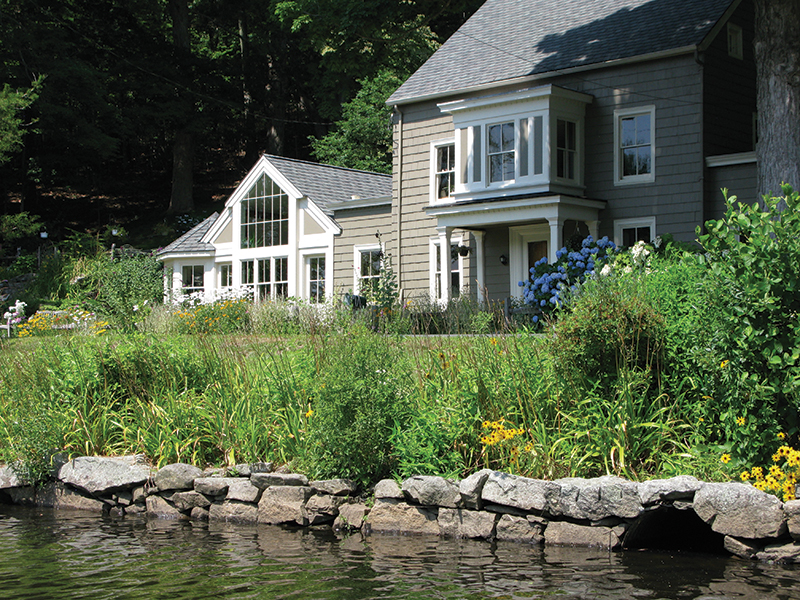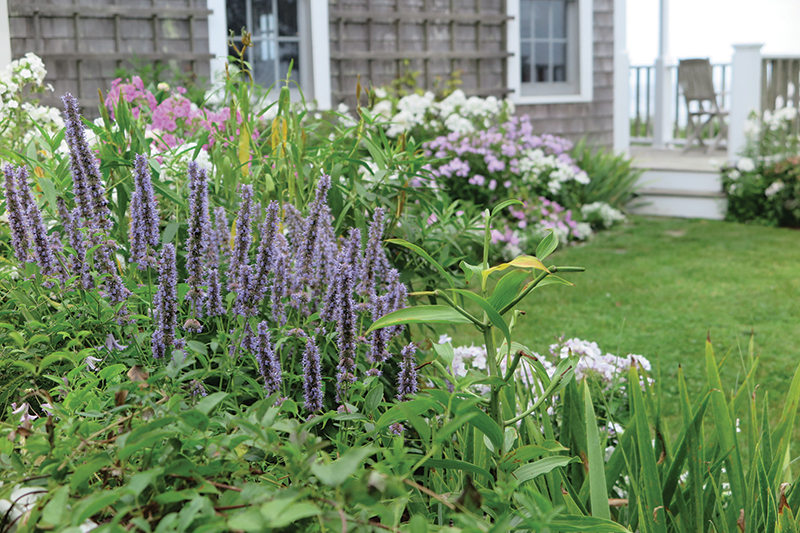
Lawn Care We Can Live With
Why this spring is a good time to turn over a new leaf

If your lawn borders a waterbody, even a modest buffer of herbaceous plants and shrubs can help breakdown or prevent pollutants from impacting water quality.
Ah, spring. For the gardeners among us it is the long-awaited return to being outside, smelling the soil, welcoming the sun. And regardless of how you spent your winter months—planning or just anticipating—the gardening season is now upon us. And suddenly there’s oh so much to do.
If you have a lawn, you know all too well that before long the ritual will begin: it is the season of mowers and spreaders, trimmers, bags of seed and fertilizer. And that’s where I’d like to encourage a pause: that fertilizer.
Gardening for Good is more than just about gardening tradition; it’s about rethinking how the way we’ve always done things can be tweaked to accommodate our growing awareness and understanding of how the world is changing, or perhaps more accurately, how we are changing the world. And because the Connecticut River, its estuary, and Long Island Sound beyond have a huge stake in our actions, it’s a good time to rethink fertilizer.

Smaller lawns can complement diverse gardens that provide visual appeal along with important resources for pollinating insects.
Although not less time consuming, the ecological benefits of this alternative are noteworthy.
The most challenging part of talking about the impacts of fertilizer to wetlands and watercourses is not being able to point to it as it is happening. When nitrogen and phosphorus leave the fertilizer bag, the rest is largely invisible: it is absorbed by plants until they have had their fill, and any extra soon makes that silent journey toward the sea. Nutrients will move through the soil into the water table, or be dissolved in surface water that leaves the lawn after a heavy rainfall either directly into a wetland or stream, or emptied onto the road where it is channeled into a storm drain and discharged to the nearest waterbody, untreated. This “stormwater impact” to our waters can and does have significant, cumulative consequences to one of nature’s—and humankind’s—most relied-upon resources: clean water.
 The impacts include the more dramatic fish kills and algae blooms that make it to the headlines, but the subtle consequences—just like the invisible nature of the fertilizer’s journey from lawn to water—are more difficult to quantify. Now more than ever before the state of the environment is muscling its way into our news feeds. The causes of climate change are not a mystery anymore, and seeking ways to collectively make a difference—and not feel so helpless in the face of global turmoil—is worth something.
The impacts include the more dramatic fish kills and algae blooms that make it to the headlines, but the subtle consequences—just like the invisible nature of the fertilizer’s journey from lawn to water—are more difficult to quantify. Now more than ever before the state of the environment is muscling its way into our news feeds. The causes of climate change are not a mystery anymore, and seeking ways to collectively make a difference—and not feel so helpless in the face of global turmoil—is worth something.

